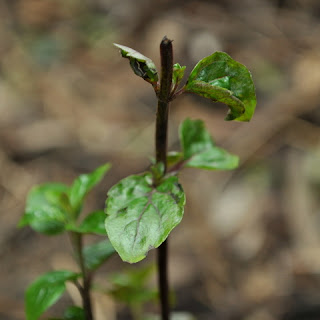The first plants in the Northcote Library Food Garden’s
indigenous/native* food garden are in and appear to be enjoying their new home
at the Southern end of the garden.
The indigenous/native garden was proposed way back in
April last year in the community consultation phase of the garden’s
establishment. Members of the local
community felt it would be fitting and beneficial to include an area that
showcased the growing of native and local indigenous plants within the garden
and the gardening group earmarked the project early on as an important ‘Phase 2’
action. The indigenous/native garden’s
inclusion is an exciting step towards the educational and sustainability vision
for the NLFG as outlined by the community in 2011.
We feel the inclusion
of the indigenous garden offers benefits including:
- Educational – people can familiarise themselves with native bush food plants and see their viability. Visitors will be able to observe edible natives and even taste the produce, possibly encouraging them to plant more bush foods in other private and public spaces.
- Biodiversity – having a native food forest alongside the existing exotic food forest and vegetable gardens encourages pollinators such as bees, and attracts native birds to the area, which will eat insects and provide more natural pest control.
The site includes many established native plants including eucalypts,
grevilleas, correas, callistemons and acacia and these plants were maintained
as an essential part of the ‘native food forest’.
The project had three phases:
1. Identification of the existing
native plants
2. Researching and identification
of suitable indigenous and native food plants for inclusion
3. Tidying of the site, acquisition
and planting of the first plants
The native forest garden design incorporates the existing natives from
the tall eucalypts to the prostrate grevilleas to create a multi-layered native
ecosystem. New plants were sourced from our local native plant experts VINC and other local nurseries. All plants are labelled
clearly and we plan to add further signage and annotations in the future. Delicate varieties such as yam daisy
(Microseris lanceolata), chocolate lily (Arthropodium strictum), vanilla lily
(Arthropodium milleflorum), and bulbine lily (Bulbine bulbosa) are being grown
in large pots at present so as to not be ‘overwhelmed’ and lost in the garden.
Credit must go to Angelo and Damien, of the NLFG’s advisory group, who gave their time, expertise and enthusiasm to the project and several of our gardeners who, through their research and hard work, were instrumental to the project’s success.
The indigenous/native garden is an ongoing project and will be added to
over time.
Useful links:
VINC - http://www.vinc.net.au/
Merri Creek Management Committee - http://www.mcmc.org.au/
* Please note that here we have used the term indigenous to denote plants that are
indigenous to the local Darebin area and native
as plants that are indigenous to Australia, but not necessarily to the local
area.
 |
| Matted Flax Lily (Dianella amoena) |
 |
| Native Mint (Menthos Australis) protected by twiggy tripod |
 |
| Native Mint (Menthos Australis) |
 |
| Cut Leaf Daisy (Brachyscome multifida) protected by plastic cover |
 |
Chocolate Lily (Arthropodium strictum)
planted in pots to protect delicate foliage
|
 |
| Small-Leaf Bramble or Native Raspberry (Rubus parvifolius) |
 |
Common Apple Berry or Dumpling Apple (Billardiera scandens)
|
 |
| Nodding Salt Bush (Einadia nutans) |
Text for this article has been contributed by Allison and Angelo



Great This really is one of the best blogs I've ever come across on this subject.
ReplyDeleteSaber Pest Control